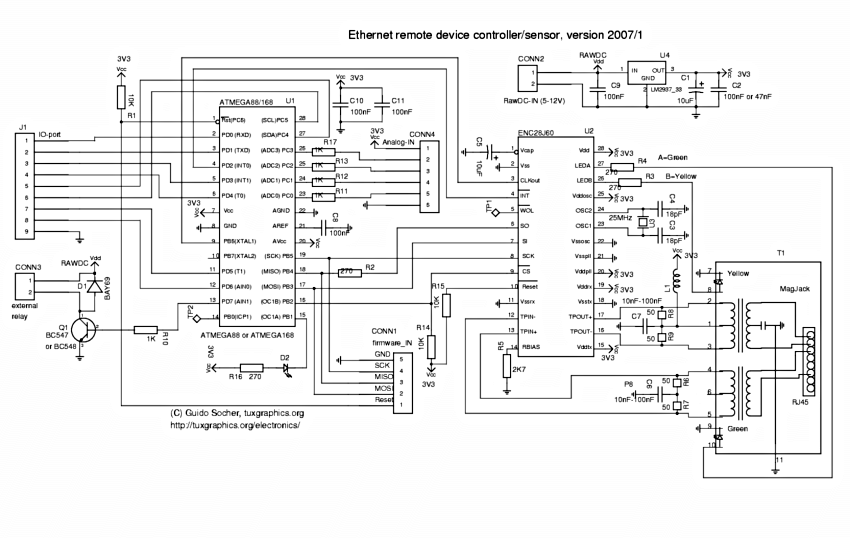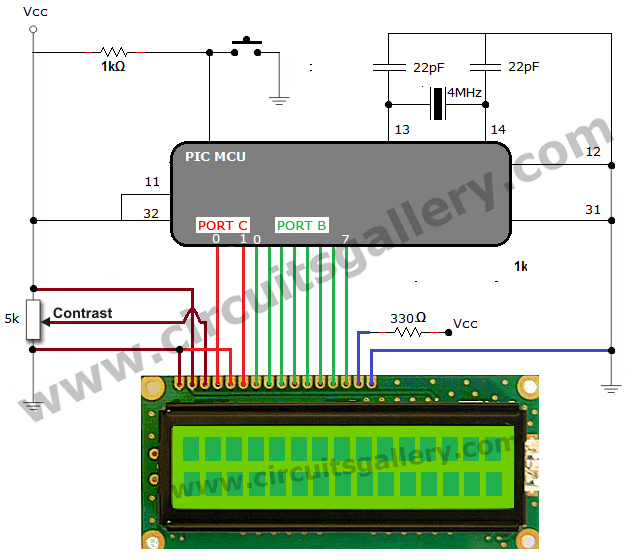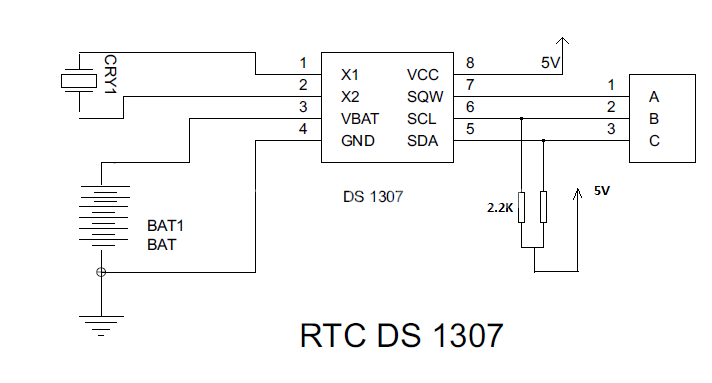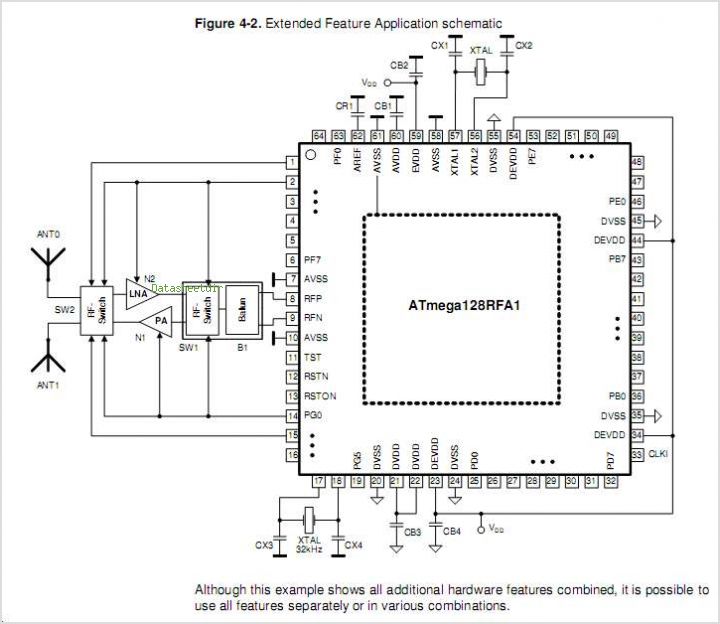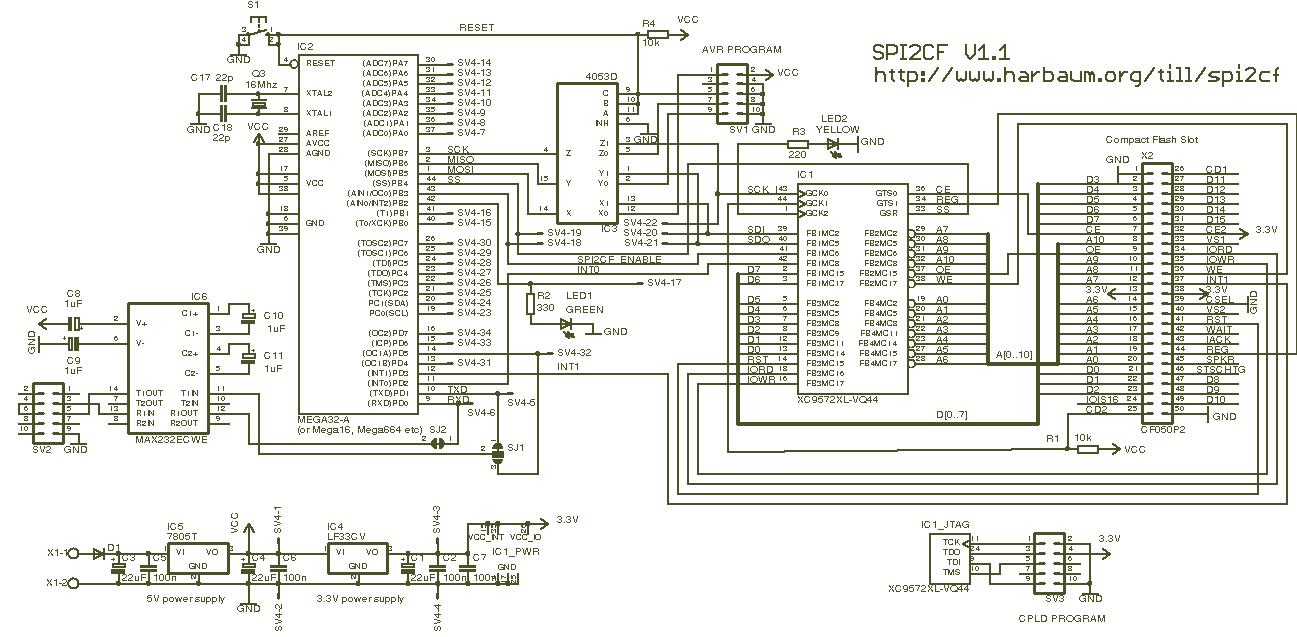
AT90LS2323 Microcontroller
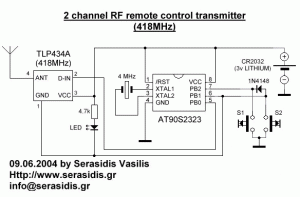
The following circuit illustrates the AT90LS2323 Microcontroller Circuit Diagram. Features include a voltage range of 2.7 to 6 volts, and compatibility with all 2323 chips. Components are included.
The AT90LS2323 microcontroller circuit is designed to operate within a voltage range of 2.7 to 6 volts, making it versatile for various applications. It is crucial to ensure that the power supply adheres to these voltage specifications to prevent damage to the microcontroller. The circuit typically includes essential components such as resistors, capacitors, and possibly external oscillators, depending on the specific application requirements.
The microcontroller can be integrated into a variety of systems, providing functionalities such as input/output control, data processing, and communication interfaces. Given its compatibility with all 2323 chip variants, the design allows for flexibility in selecting the appropriate chip based on the specific needs of the project.
In a typical schematic, the microcontroller will be connected to power supply pins, ground, and various input/output pins. Additional components may include decoupling capacitors near the power pins to filter out noise and stabilize the voltage supply. If the application requires, an external crystal oscillator may be connected to the designated oscillator pins to provide the necessary clock signal for the microcontroller's operation.
The schematic should also illustrate connections for programming and debugging, ensuring that the microcontroller can be easily programmed and tested during development. Overall, the AT90LS2323 microcontroller circuit diagram serves as a foundational reference for engineers and designers looking to implement this microcontroller in their electronic projects.The following circuit shows about AT90LS2323 Microcontroller Circuit Diagram. Features: 2.7 ? 6 volts, Can work in all 2323 chips. .Component: . 🔗 External reference
The AT90LS2323 microcontroller circuit is designed to operate within a voltage range of 2.7 to 6 volts, making it versatile for various applications. It is crucial to ensure that the power supply adheres to these voltage specifications to prevent damage to the microcontroller. The circuit typically includes essential components such as resistors, capacitors, and possibly external oscillators, depending on the specific application requirements.
The microcontroller can be integrated into a variety of systems, providing functionalities such as input/output control, data processing, and communication interfaces. Given its compatibility with all 2323 chip variants, the design allows for flexibility in selecting the appropriate chip based on the specific needs of the project.
In a typical schematic, the microcontroller will be connected to power supply pins, ground, and various input/output pins. Additional components may include decoupling capacitors near the power pins to filter out noise and stabilize the voltage supply. If the application requires, an external crystal oscillator may be connected to the designated oscillator pins to provide the necessary clock signal for the microcontroller's operation.
The schematic should also illustrate connections for programming and debugging, ensuring that the microcontroller can be easily programmed and tested during development. Overall, the AT90LS2323 microcontroller circuit diagram serves as a foundational reference for engineers and designers looking to implement this microcontroller in their electronic projects.The following circuit shows about AT90LS2323 Microcontroller Circuit Diagram. Features: 2.7 ? 6 volts, Can work in all 2323 chips. .Component: . 🔗 External reference
Warning: include(partials/cookie-banner.php): Failed to open stream: Permission denied in /var/www/html/nextgr/view-circuit.php on line 713
Warning: include(): Failed opening 'partials/cookie-banner.php' for inclusion (include_path='.:/usr/share/php') in /var/www/html/nextgr/view-circuit.php on line 713
